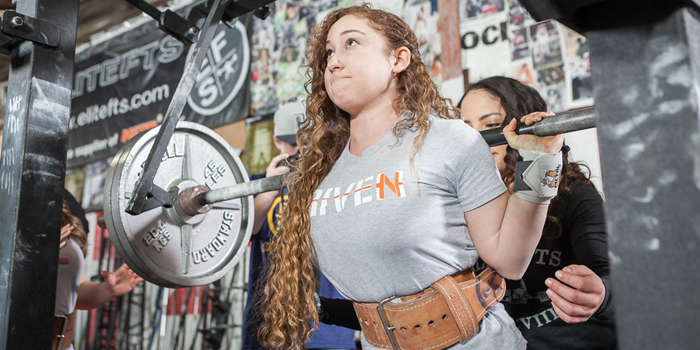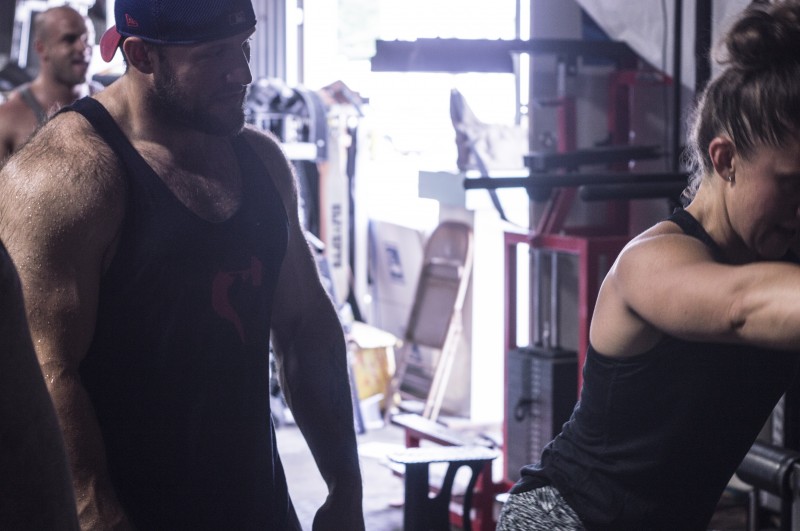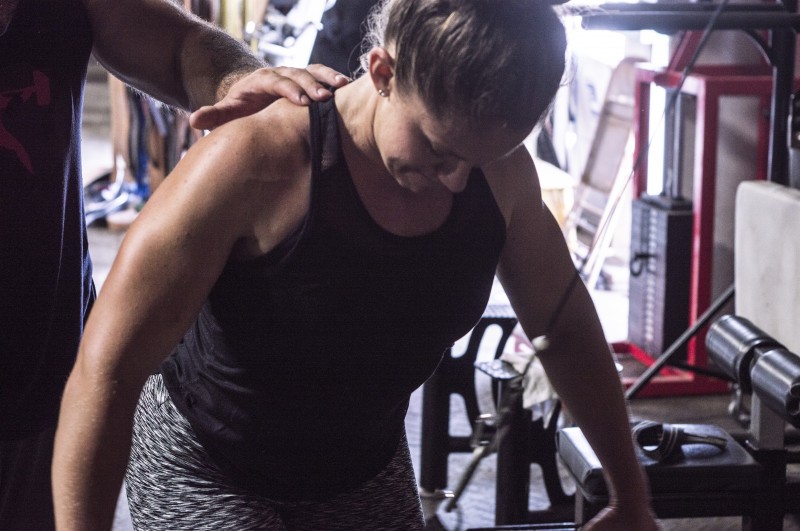
Those who have been training a long time, and feel like they are at the boundaries of their hypertrophic abilities, often ask me if I think muscle hyperplasia can occur. Whereas hypertrophy is increasing the size of a cell, hyperplasia is increasing the total number of cells. A muscle cell is called a muscle fiber, and the running idea in the field of muscle is that you can increase the cross-sectional area of a muscle cell (hypertrophy), but not the number of cells per muscle (hyperplasia). The debate surrounding the idea that muscle cells cannot undergo hyperplasia has been around for a while, likely because evidence in humans (and in my opinion, animals) is limited. So, before we get into all of that, let’s just break down hypertrophy, hyperplasia, and the things that can cause them to occur.
Homeostasis, Hyperplasia, and Hypertrophy
At baseline, most cells are at a steady state of functioning. We call this homeostasis. When a cell is stressed, homeostasis is disrupted, and more or less two things can occur: 1) the cell gets injured because it can’t adapt, or 2) the cell adapts and hits a “new homeostasis.” In training terms, this would be like training 10 x 10 squats and either injuring yourself (because it was way too much volume) or recovering and growing from the stimulus.
The response of a cell to a stressor is what we call an adaptation. Adaptations, in the most simplistic sense, are the functional and structural responses of a cell to a given stimulus. Whether it’s a training session that makes you feel like you were “hit by a mac truck”, or actually getting hit by one, stress to the muscle will either force it to adapt or die. In terms of adaptation, responses allowing the muscle cell to adapt include things like hypertrophy or atrophy. But let’s be real — rarely does anyone reading elitefts want an atrophic adaptation.
RECENT: Practical and Scientific Applications for Creating a Calf Workout
When it comes to training, hypertrophy happens when the muscle fiber responds to an overload stimulus by increasing the number of myofiliments and contractile proteins it makes, which subsequently increases the muscle fiber's size. In this context, hypertrophy allows the existing muscle fiber to become stronger and more resistant to training-induced damage. This adaptation of getting bigger and stronger, without changing the number of fibers, allows the fibers themselves to be better equipped to maintain homeostasis when stressed with an overload stimulus.

Hyperplasia is a different beast. It’s one of those things that doesn't happen to non-dividing cells (like mature muscle). Why? Because it’s classically defined as a mitosis-mediated increase cell number in a given organ. Mitosis is part of the cycle of cell division where replicated chromosomes separate into two new nuclei. Whereas muscle precursor cells can undergo mitosis, in theory, mature muscles cannot because they are no longer dividing. The addition of myonuclei (a muscle nuclei) comes from the muscle precursor pools dividing or expanding and then fusing to injured fibers. When the precursor cells fuse to the multinucleated muscle fiber, a new nuclei is added. This process is part of muscle differentiation, regeneration, and hypertrophy — and does not include the division of a mature muscle fiber.
So why the debate?
Muscle hyperplasia is thought to either occur via 1) the fusion of muscle precursor cells to each other, rather than to the injured, damaged, or overloaded muscle fiber (AKA de novo fiber formation), or 2) the splitting of one fiber into two (fiber splitting). Personally, I’ve yet to come across a paper on de novo fiber formation, but there are some papers on the fiber splitting hypothesis. The hallmark paper to discuss fiber splitting induced hyperplasia was written in the 1970’s. In the paper they used a cat model of weight lifting and measured fiber number by counting the number of fibers per cross-sectional area. The authors found that there were increases in fiber number with training1 (in addition to increases in fiber size), and believed the increase in fibers as the result of fiber splitting. Overload models (stretch and weight induced) in rats and birds2, 3, designed to mimic resistance training (to some extent), have also shown that overload can induce muscle hyperplasia.

Again, a lot of these things were quantified using cross-sectional fiber counting and the observed hyperplasia was believed to result from fiber splitting. For those applied folks out there that don’t care about animal research, the evidence supporting hyperplasia in humans is kind of limited and inconclusive. It has been shown that bodybuilders have more fibers per motor unit than controls4, but that doesn't conclusively show that the increases in fibers per motor unit was driven by a hyperplasic response to training. Sure, you can make the assumption it was, but I wouldn't suggest it. There are also other studies out there that have found that training does not increase fiber number, further making it difficult to understand if muscle hyperplasia can or cannot occur. For me, until I see a mature fiber undergo mitosis, I’m going to struggle with the idea of de novo fiber formation. I’m also going to be a believer that fiber splitting is fiber branching, and really a defect in muscle precursor cell fusion rather than the formation of a new muscle cell.
What is fiber branching, you ask? Fiber branching is something reported to occur in muscular dystrophies5, AKA a group of 30+ genetic disorders that result in declines in muscle weakness and strength. Fiber branching is a Y-shaped bifurcation in a fiber that results from imperfect fusion of muscle precursor cells as they attempt to patch and repair a broken or damaged fiber. The people studying branching in muscular dystrophy might even tell you it's the same thing as fiber splitting. Thus, splitting/branching is not due to increases in new cells via the separation of replicated chromosomes into two new nuclei, but instead is due to messed up fusion between the cells working to patch up damaged fibers. Branching has also been implicated in humans who powerlift6, but like in muscular dystrophies, is thought to result from defect in the regeneration process. It’s unlikely fiber branching is a positive adaptation to training, since branched fibers tend to be pretty vulnerable to contractile damage. I’m pretty sure that the number of people chasing hyperplasic gains would significantly drop once it was openly out there that “split fibers” were weaker and less resistant to damage. Personally, if I wanted to get hooge (huge), I'd pick 10 bull-strong fibers over 20 little, fragile ones.
Disclaimer Summary
Although I might be proven wrong one day, here are my feelings on the hyperplasia debate.
- Although the idea that muscle precursors can fuse to each other to make new fibers seems plausible (de novo fiber formation), I haven’t seen any real scientific support showing this type of hyperplasia happens in response to muscle overload.
- Fiber splitting/branching results in weaker fibers and occurs in conditions of dystrophy. If one were to define fiber splitting as a type of hyperplasia, I would say this type of adaptation isn’t great for bodybuilders or powerlifters looking to get bigger, faster, or stronger.
- We need more research on the topic of muscle hyperplasia before we can claim that it does or does not occur.
References
- Gonyea, W., Ericson, G.C. & Bonde-Petersen, F. Skeletal muscle fiber splitting induced by weight-lifting exercise in cats. Acta physiologica Scandinavica 99, 105-109 (1977).
- Antonio, J. & Gonyea, W.J. Muscle fiber splitting in stretch-enlarged avian muscle. Medicine and science in sports and exercise 26, 973-977 (1994).
- Ho, K.W. et al. Skeletal muscle fiber splitting with weight-lifting exercise in rats. The American journal of anatomy 157, 433-440 (1980).
- MacDougall, J.D., Sale, D.G., Alway, S.E. & Sutton, J.R. Muscle fiber number in biceps brachii in bodybuilders and control subjects. Journal of applied physiology: respiratory, environmental and exercise physiology 57, 1399-1403 (1984).
- Chan, S. & Head, S.I. The role of branched fibres in the pathogenesis of Duchenne muscular dystrophy. Experimental physiology 96, 564-571 (2011).
- Eriksson, A., Lindstrom, M., Carlsson, L. & Thornell, L.E. Hypertrophic muscle fibers with fissures in power-lifters; fiber splitting or defect regeneration? Histochemistry and cell biology 126, 409-417 (2006).










